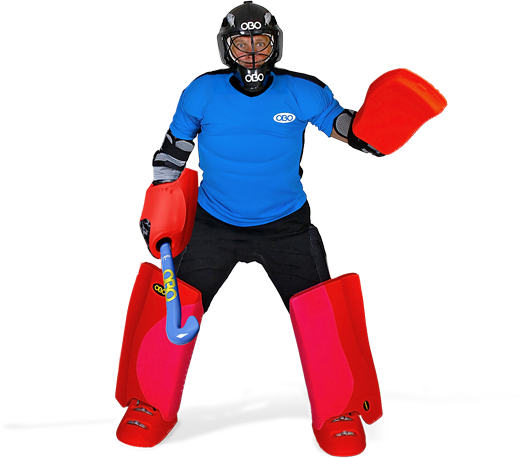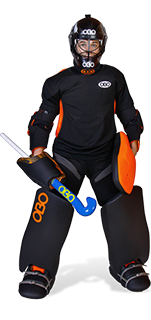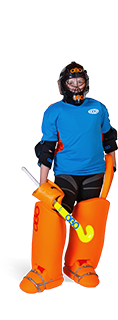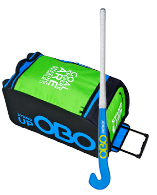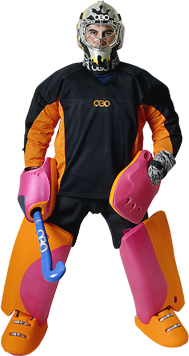KEEPERS RESOURCES

Foot-eye co-ordination
Co-ordination with your feet is just as important as having good hand-eye co-ordination. To be able to make quick saves with your feet and when on the move, you need to have good reactions from your feet; able to track the ball into your feet. Like hand-eye co-ordination, you need to work hard on co-ordinating your feet for those reflex saves. In field hockey, where our feet play an important part in distributing the ball, and making the actual saves, you should be aware of the need to have sufficient skills in this area. Other than saves, our feet are also essential for kicking the ball in clearances; seeing the ball into your feet and legs is a key to goalkeeping, since that is where the majority of low shots are saved, and this seems to somewhat overlooked in our sport. It should therefore be your mission to have just as sufficient co-ordination with our feet as we do with our hands
Soccer tricks
Soccer (football) is very good for practising your foot skills. The ball skills they do are great for hockey goalkeepers; getting the feet active and moving around to connect with the ball. As your eye has to be on the ball to track the ball into your feet and make connection for the save or kick, then you will be working on your foot-eye co-ordination. Although it takes a bit of skill and practise, getting used to having the ball at your feet should be useful in feeling comfortable kicking the ball, as well as improving your reactions when saving with your kickers.
Here’s a video clip to give you an idea:
http://www.youtube.com/watch?v=M3S-mOvN2Xs
‘Keepy uppies’
The soccer trick that everyone knows: kicking the ball up into the air, and then keeping it up there, by continuously knocking it back up, is a great way of establishing eye connection with your feet. All you need to do is basically kick a soccer ball into the air and see how many times you can kick it up without it ending up dropping to the floor. This can easily be done at home, in your back garden, or down a park. Bending at the hip to lean forward will help with your technique.
This clip is a good example:
http://www.youtube.com/watch?v=_YfUrqqxZbo&feature=related
It is also possible to do this in your pads; kicking a hockey ball up in the air with your kickers. You can do this before a match or have a go doing it at training. The principle is the same: you need to keep the ball up in the air by continuously kicking it up. As well as working your eye contact, it also gets your feet moving.
‘Wall ball’
Kicking a soccer ball against a brick wall is a great way to practise your lower body reflexes. Kick the ball against the wall and then try to control the rebound back off the wall. The speed of the redirected ball will be harder to control, making it a good drill for practising foot reflexes.
Volleying
Volleying a soccer ball is another great way of practising ball skills, and working on your foot-eye co-ordination. Volleying is when you kick the ball up in the air and then shoot as it comes back down. When you volley the ball you will have to follow through with your vision, focusing on the ball as you connect with foot. Doing this against a wall is the best idea; the rebound sent out you can volley back again.
Passing
Knocking a soccer ball around amongst friends is a simple way of practising your kicking skills; passing the ball between you and another (or multiple) players at varying speeds and distances. This will help you practise your ball skills; working on your ability to kick the ball and watch to see when a pass is coming to you.
Tennis balls
To make things harder and get more practise, you can change the type of ball you use. Soccer balls come in different sizes, so you can get a smaller sized ball to make it harder for yourself. Tennis balls are also a good idea; as they are much smaller, they are more difficult to kick.
Comments
Leave Your Comments Below















